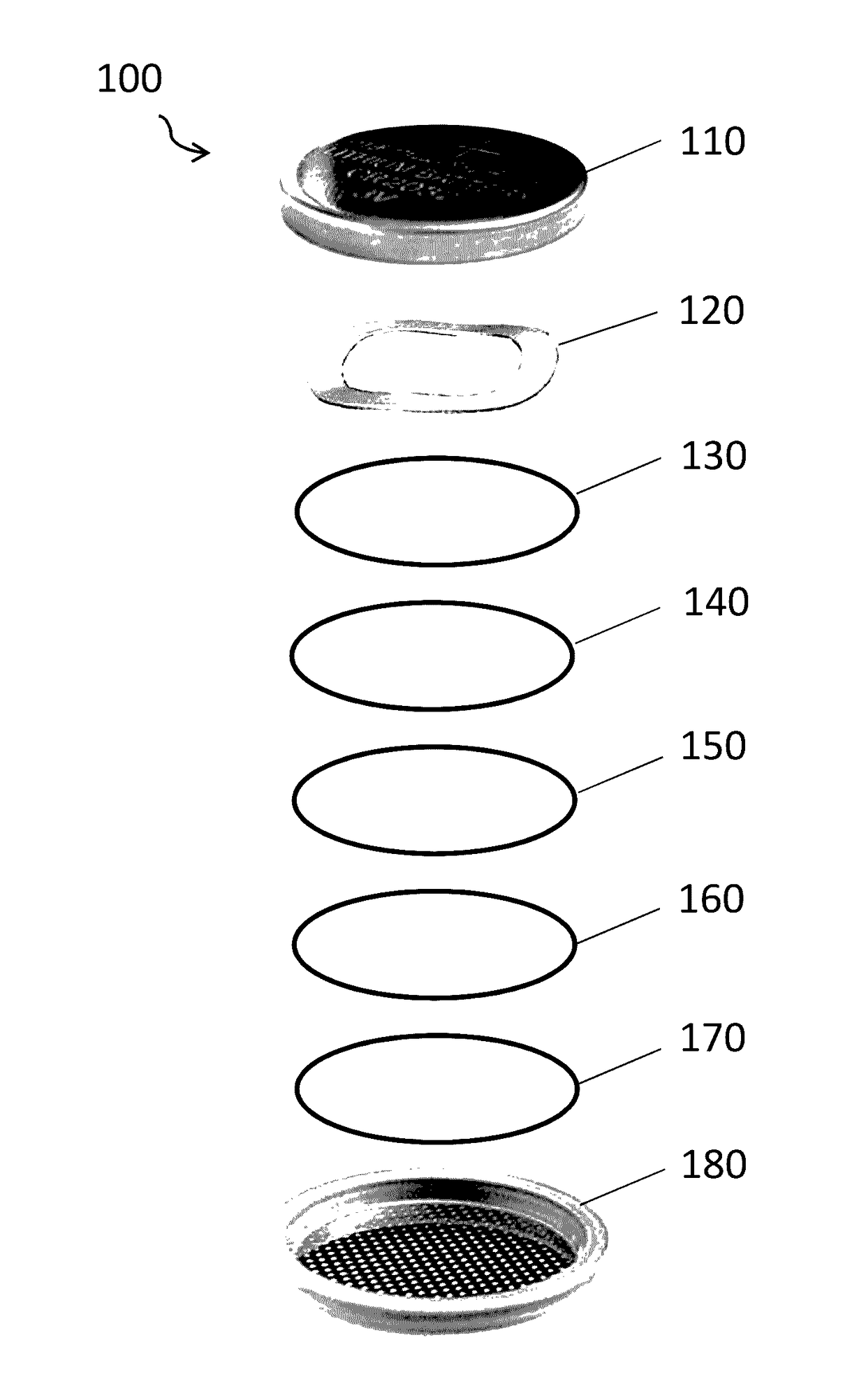Rechargeable aluminum ion battery
- Summary
- Abstract
- Description
- Claims
- Application Information
AI Technical Summary
Benefits of technology
Problems solved by technology
Method used
Image
Examples
working examples
Example 1
Alkali Metal Hydroxide Treatment of the Aluminum Anode
[0074]Battery-grade pristine aluminum foils were treated to increase hydrophilicity and improve wettability of the anode. While not wishing to be bound by theory, it is believed that a hydrophobic aluminum anode would prevent efficient ion transport due to high interfacial resistance between the aluminum metal and aqueous electrolyte interface, leading to a significant drop in performance. The hydrophilicity of the surface of the aluminum metal was increased by treatment with a lithium hydroxide aqueous solution. Lithium is known to have a strong affinity for aluminum, forming a range of lithium-aluminum based alloys, characterized by the formation of a greyish-white texture on the aluminum surface. The resulting aluminum anode is found to be significantly more hydrophilic than untreated, pristine aluminum. Aqueous solutions of other alkali metal hydroxides, such as sodium hydroxide and potassium hydroxide, are also suit...
example 2
Aluminum Anode Vs. Acid-Treated Lithium Manganese Oxide Cathode Battery and Aluminum Anode Vs. Graphite-Graphic Oxide Cathode Battery
[0077]Batteries were assembled using an aluminum anode, an acid-treated lithium manganese oxide cathode and an aqueous solution of aluminum nitrate as the electrolyte. Studies were conducted using the standard 2032 coin cell form factor, illustrated in FIG. 2. FIG. 2 is a schematic diagram of an exploded view of a test battery 100 in a coin cell format, showing the positive case 110, a spring 120, a first spacer 130, a cathode 140, a separator 150, an anode 160, a second spacer 170 and the negative case 180. Prior to assembly of the test battery 100, aliquots of the electrolyte are placed between the separator 150 and the anode 160, as well between the separator 150 and the cathode 140. Preferably, the first spacer 130, the cathode 140, the separator 150, the anode 160, and the second spacer 170 are immersed in and equilibrated with the electrolyte pri...
example 3
Electrolyte Additives
[0106]In some examples, the electrolyte, 0.5 M Al(NO3)3, was mixed with 10-50 vol. % 2 M LiOH to obtain a composite electrolyte. While not wishing to be bound by theory, it is believed that addition of LiOH to the electrolyte comprising aluminum ions increases the concentration of OH−1 in the electrolyte, and therefore prevents loss of active ions during transportation through undesired side reactions. Owing to the reactivity of aluminum in water, it is not uncommon to observe oxidation of Al(OH)41− ions prior to reaction at the cathode site.
[0107]The oxidation reaction can be summarized as:
Al(OH)41−→Al3++4OH−1 (9).
[0108]Depending on the concentration of OH−1 ions in the electrolyte, there can be a reduction of active hydroxyaluminate ions reaching the cathode, through a dissociation reaction that subsequently leads to the oxidation of hydroxyaluminate and re-formation of multivalent aluminum ions. Increasing the concentration of OH−1 ions through incorporation...
PUM
 Login to View More
Login to View More Abstract
Description
Claims
Application Information
 Login to View More
Login to View More - R&D
- Intellectual Property
- Life Sciences
- Materials
- Tech Scout
- Unparalleled Data Quality
- Higher Quality Content
- 60% Fewer Hallucinations
Browse by: Latest US Patents, China's latest patents, Technical Efficacy Thesaurus, Application Domain, Technology Topic, Popular Technical Reports.
© 2025 PatSnap. All rights reserved.Legal|Privacy policy|Modern Slavery Act Transparency Statement|Sitemap|About US| Contact US: help@patsnap.com



